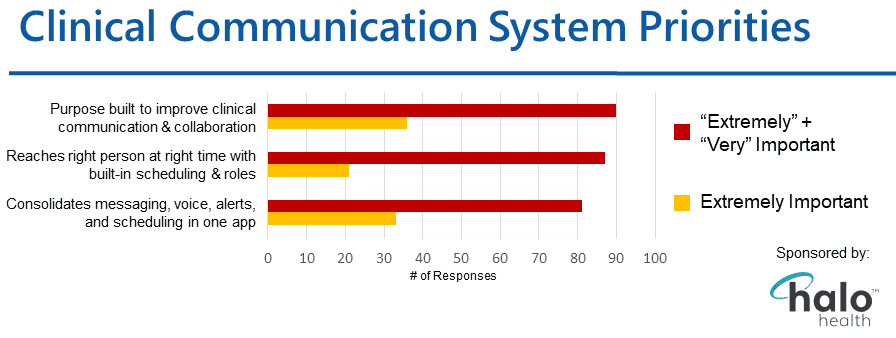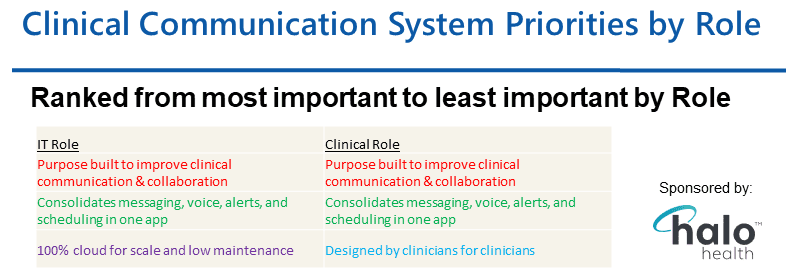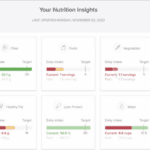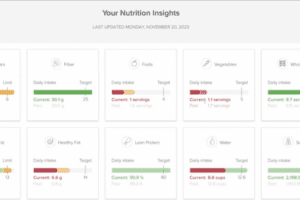In a recent clinical communications survey we did of the Healthcare IT Today community sponsored by Halo Health, we found some really fascinating insights into how healthcare organizations look at their clinical communication systems. We had over 140 healthcare leaders respond to the survey and had a nice mix of large, medium, and small organizations take part in the survey.
One of the biggest insights we gleaned from healthcare leaders was around priorities they had for their clinical communication system partner. While considerations such as cloud architecture and experience with large system deployments were not unimportant, the survey respondents did indicate even higher priorities.
The biggest priority for healthcare leaders was a solution that was purpose built for clinical communication that reached the right person at the right time and consolidated the experience for the user.
Check out the details in the chart below.

Considering our current environment, these results make sense. The main benefit healthcare leaders wanted from their clinical communication system was how it improved the workflow for the clinician or other users. No doubt we are all tired of implementing government driven software that doesn’t provide a great experience for the end user. It seems like end users are feeling it and healthcare IT leaders are feeling it too.
The other major issue this highlights is the alert and interruption fatigue that is so common in many healthcare organizations. The above survey results reinforce that solving this problem is of utmost importance to healthcare organizations. A key to consolidating the number of messages, alerts, and interruptions is making sure they reach the right person at the right time, using built-in capabilities such as on-call scheduling and role-based collaboration. Often the worst kind of alert and interruption fatigue is getting the wrong message when someone else is supposed to receive it.
As we processed the survey results more, we found an interesting difference when breaking down the preferences by IT and clinical roles, which you can see in the chart below.

For those in the IT role, a 100% cloud communication solution was a much bigger priority for them than those in the clinical roles. On the one hand this makes sense that the IT people would care more about the architecture of a solution than their clinical counterparts. However, I’ve heard many over the years argue for on premise solutions in healthcare. This jump in IT professionals wanting their clinical communication solution in the cloud is a strong indicator that healthcare is finally moving past that on premise IT preference and becoming more open to cloud solutions.
Talking with hundreds of CIOs over the years, so many of them have a hodgepodge of communication solutions they’ve collected from various projects throughout the years. One of the big projects many of them face is consolidating those systems into a streamlined solution that’s more easily managed and has the features they need to evolve into the future. As they work on these efforts, it looks like those clinical communication systems that focus on optimizing the workflow and making the user more efficient are going to be the big winners going forward.













